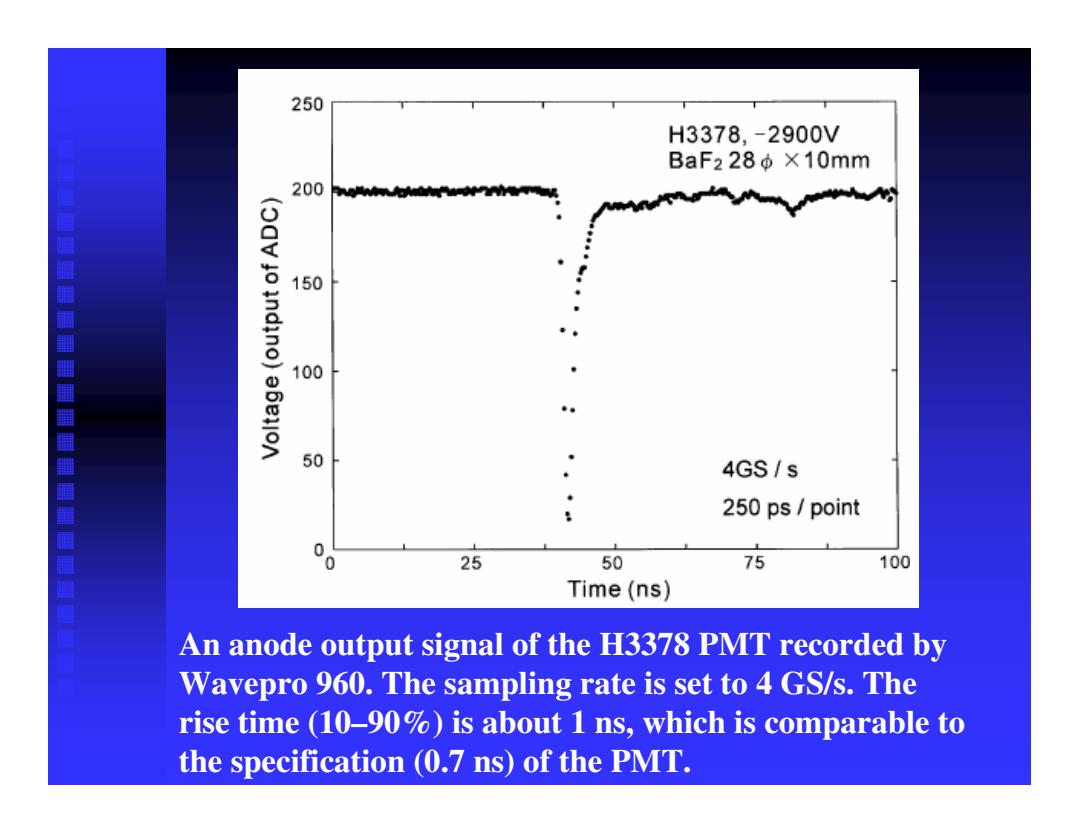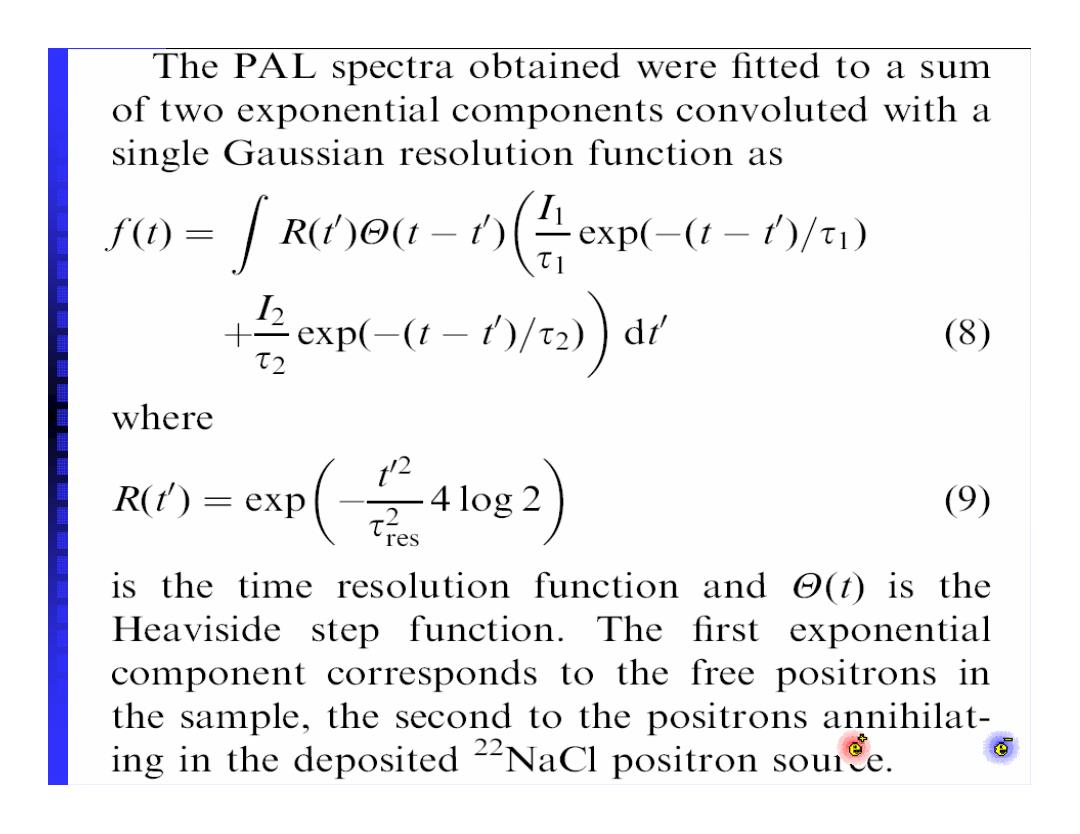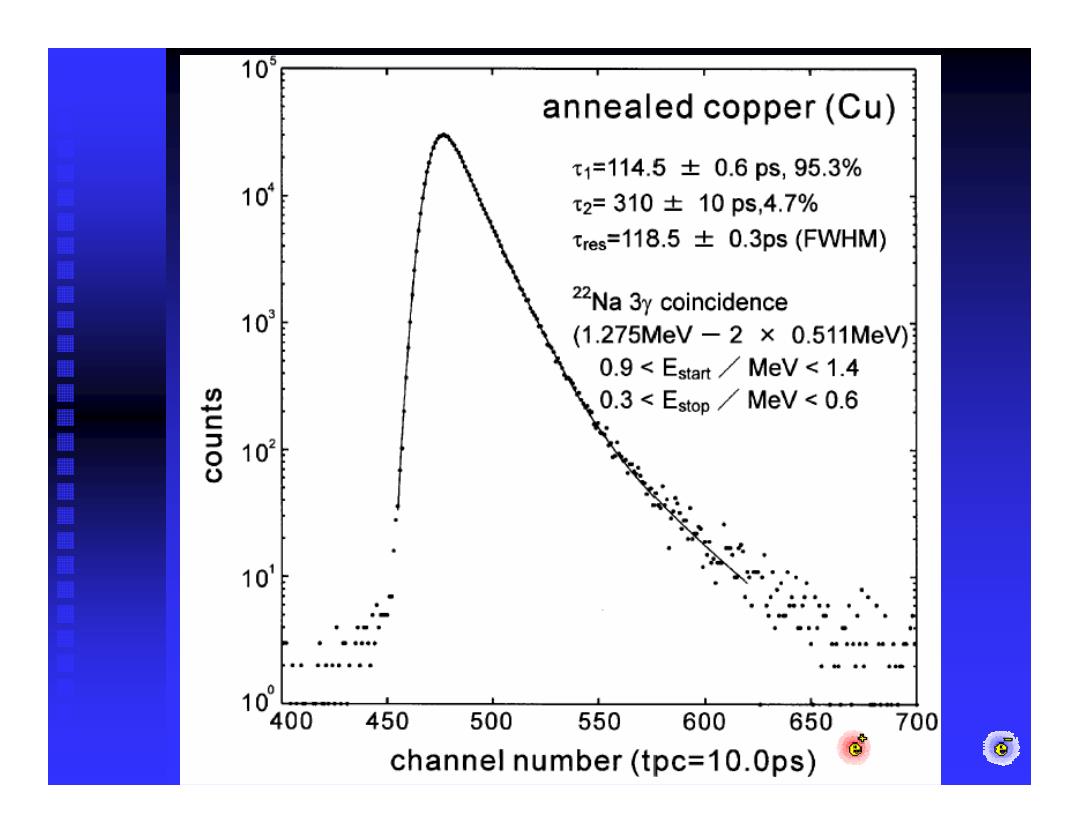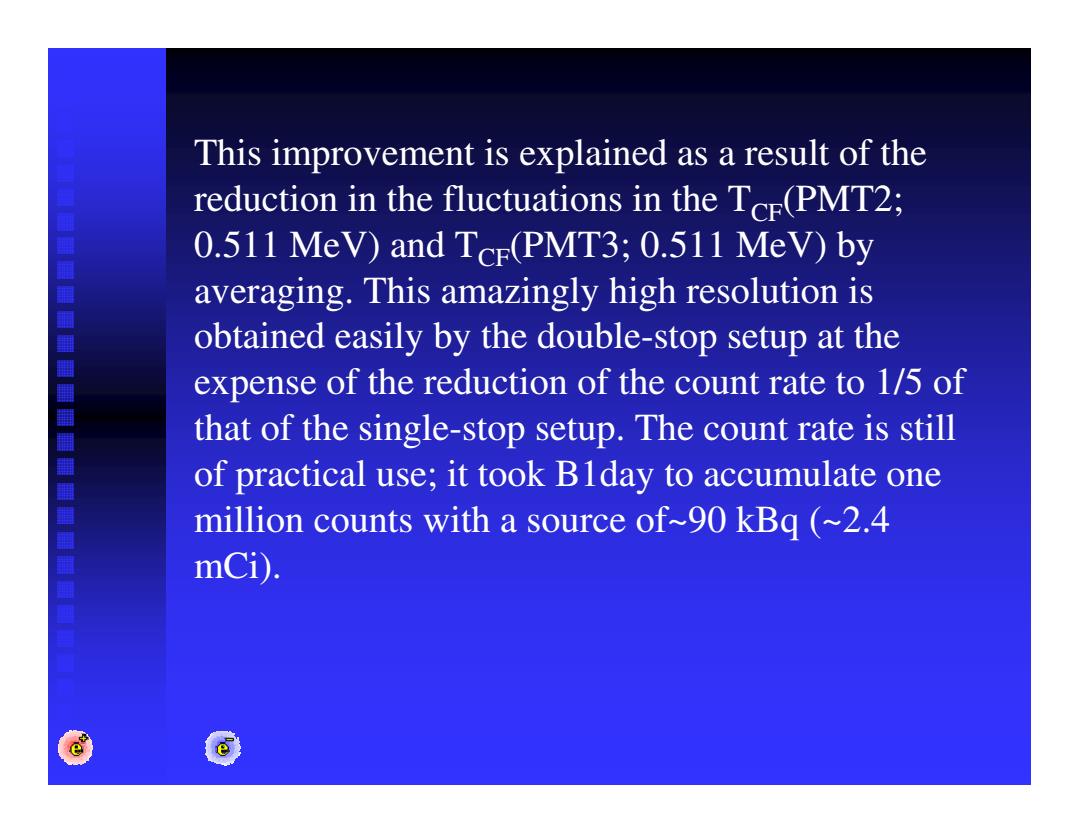
250 H3378,-2900V BaF228Φ×10mm 200 150 100 50 4GS/s 250 ps /point 0 25 50 75 100 Time(ns) An anode output signal of the H3378 PMT recorded by Wavepro 960.The sampling rate is set to 4 GS/s.The rise time (10-90%)is about 1 ns,which is comparable to the specification (0.7 ns)of the PMT
An anode output signal of the H3378 PMT recorded by Wavepro 960. The sampling rate is set to 4 GS/s. The rise time (10–90%) is about 1 ns, which is comparable to the specification (0.7 ns) of the PMT

The PAL spectra obtained were fitted to a sum of two exponential components convoluted with a single Gaussian resolution function as 0=Re1-(台e--) xp-(-/)dr (8) 2 where R)=cp(若4le2 (9) is the time resolution function and (t)is the Heaviside step function.The first exponential component corresponds to the free positrons in the sample,the second to the positrons annihilat- ing in the deposited 22NaCl positron soure

Single-stop setup tres=1440.4ps; T1=115±0.5ps; I1=95:49%; T2=319±10ps; I2=4.6%. Doublestop setup tres =118.5+0.4 ps; T1=114±0.6ps;I1=95.3%; T2=310±10ps;I2=4.7%:
Single-stop setup : tres =144±0.4 ps; T1=115 ± 0.5 ps; I1 =95:4%; T2 =319 ± 10 ps; I2 =4.6%. Doublestop setup : tres =118.5±0.4 ps; T1=114 ± 0.6 ps; I1=95.3%; T2=310 ± 10 ps; I2=4.7%:

10 annealed copper(Cu) t1=114.5±0.6ps,95.3% 10 2=310±10ps,4.7% tres=118.5 0.3ps (FWHM) 103 22Na 3y coincidence (1.275MeV-2×0.511MeV) 0.9<Estart/MeV<1.4 0.3<Estop/ MeV<0.6 102 10 。。。8e年。。。 10 400 450 500 550 600 650 700 channel number(tpc=10.0ps) e

This improvement is explained as a result of the reduction in the fluctuations in the Tce(PMT2; 0.511 Mev)and TCE(PMT3;0.511 MeV)by averaging.This amazingly high resolution is obtained easily by the double-stop setup at the expense of the reduction of the count rate to 1/5 of that of the single-stop setup.The count rate is still of practical use;it took B1day to accumulate one million counts with a source of~90 kBq (~2.4 mCi). e
This improvement is explained as a result of the reduction in the fluctuations in the TCF(PMT2; 0.511 MeV) and TCF(PMT3; 0.511 MeV) by averaging. This amazingly high resolution is obtained easily by the double-stop setup at the expense of the reduction of the count rate to 1/5 of that of the single-stop setup. The count rate is still of practical use; it took B1day to accumulate one million counts with a source of~90 kBq (~2.4 mCi)